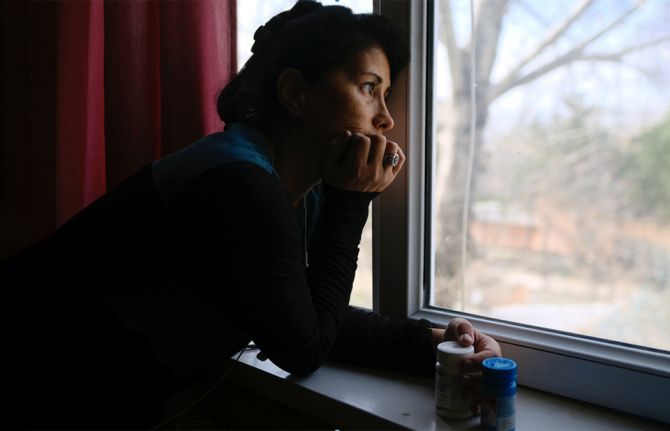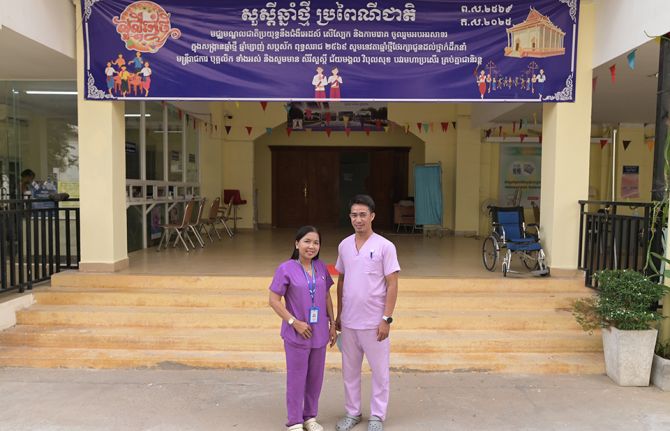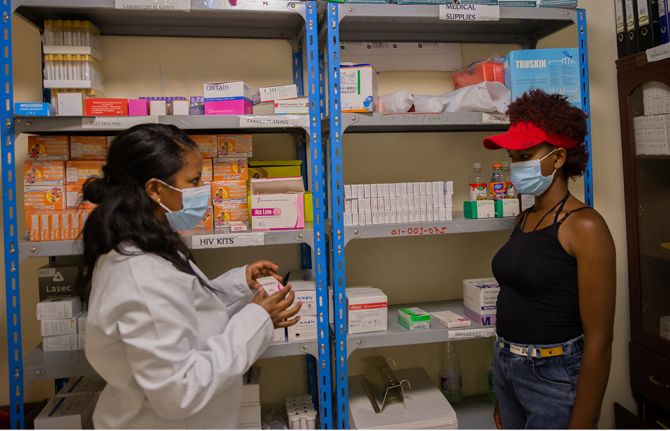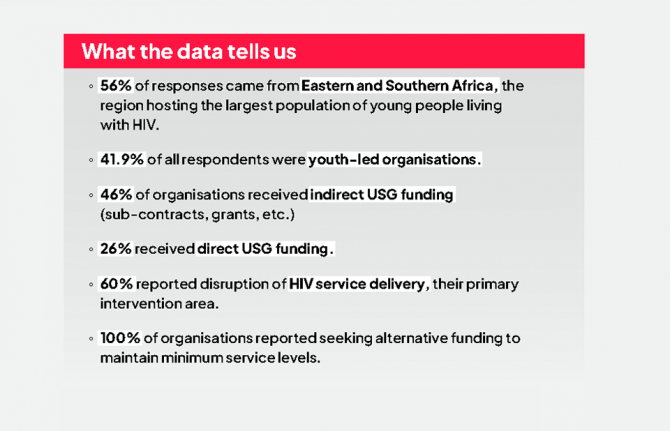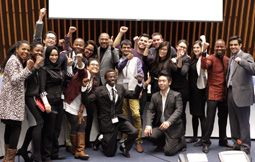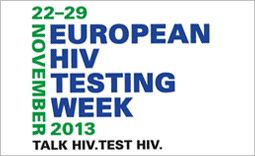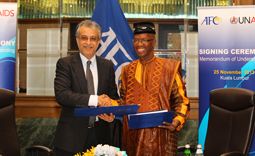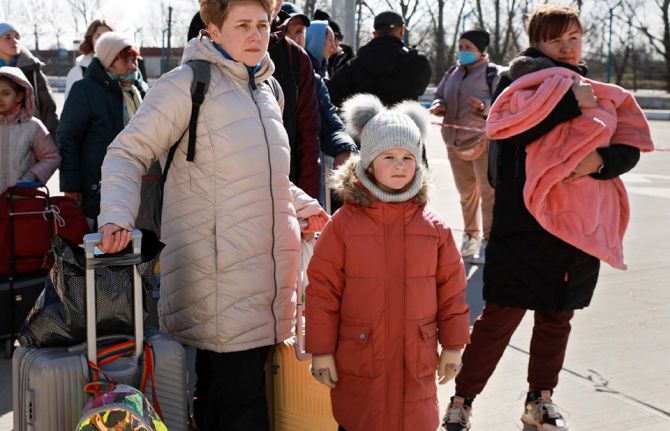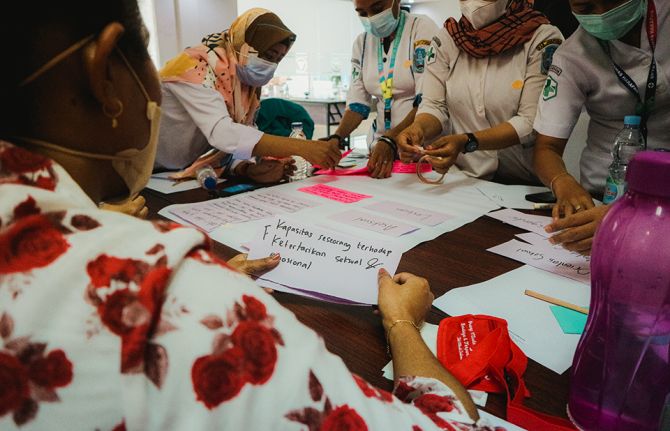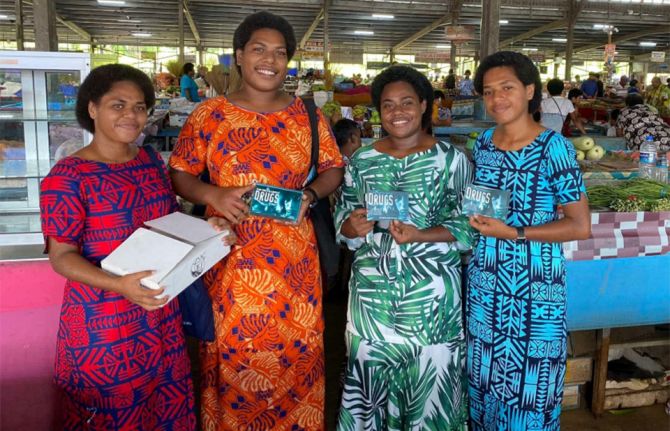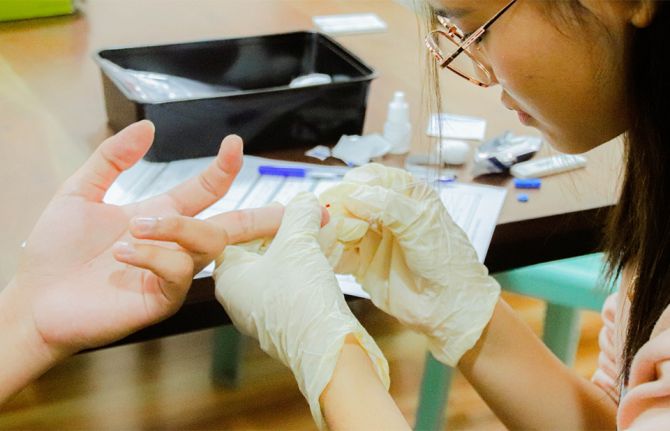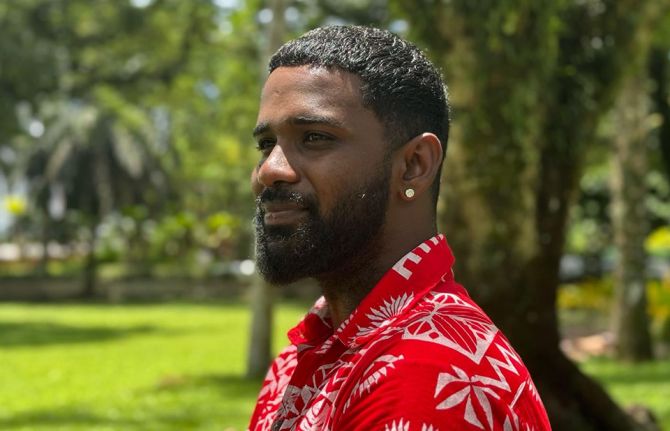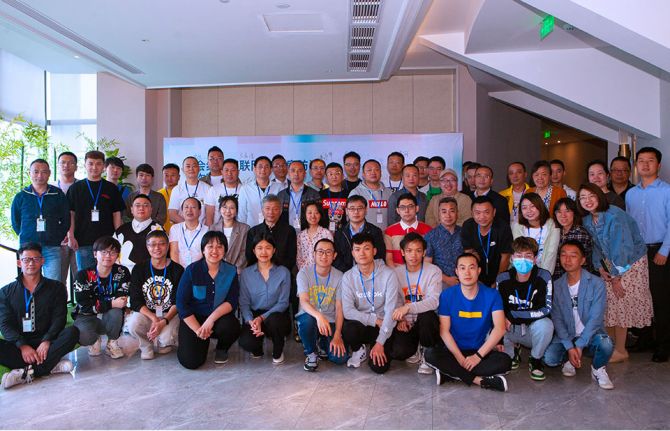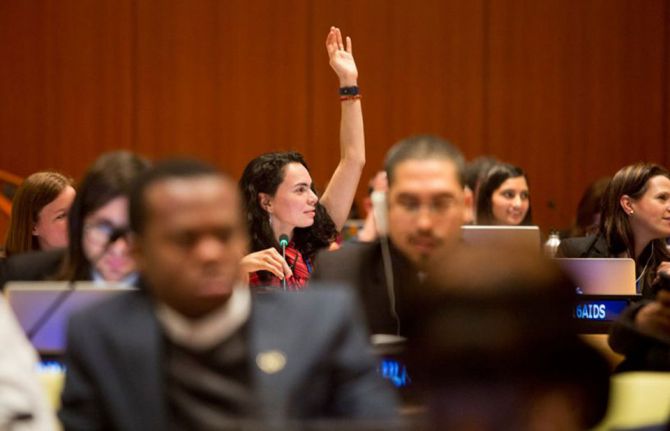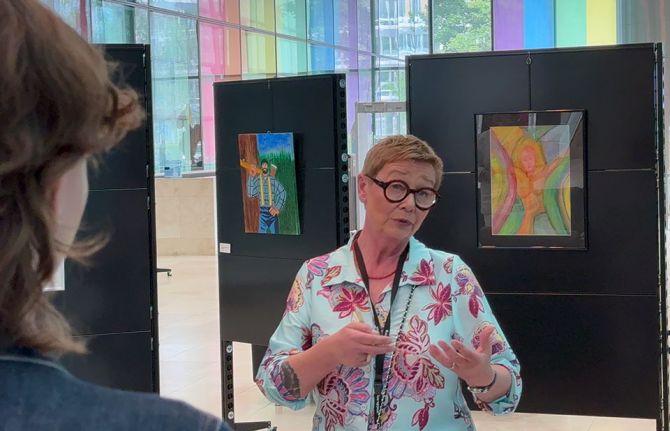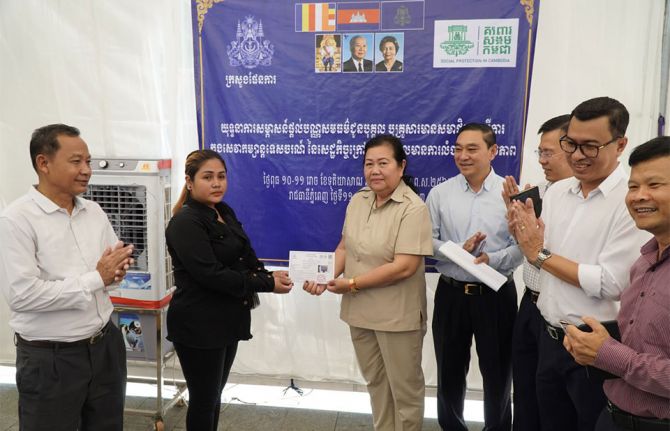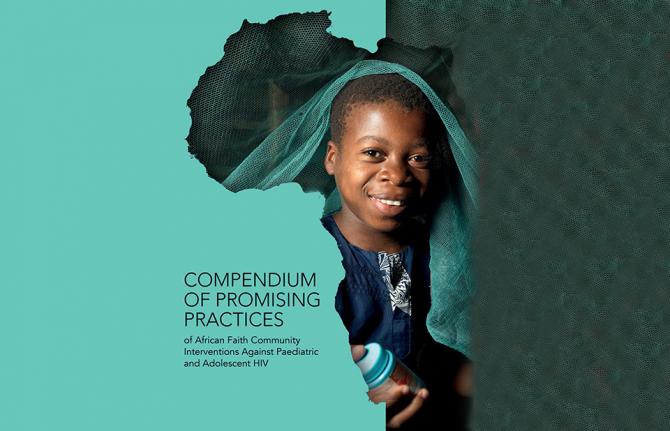
Feature Story
Harnessing the power and leadership of parliamentarians in the AIDS response
07 June 2011
07 June 2011 07 June 2011
(Left to Right): Michel Sidibé, Executive Director of UNAIDS; Anders Johnsson, Secretary General of the IPU; at Parliamentarians Meeting on June 7, 2011, at UN Headquarters, NYC.
Credit: UNAIDS/B. Hamilton
The world’s parliamentarians have a crucial role to play in an effective response to the AIDS epidemic. They provide leadership, help set the national agenda, formulate laws and authorize AIDS spending. How this influence can be harnessed in the challenge to HIV was the central theme of an important meeting for parliamentarians held on the eve of the UN High Level Meeting on AIDS in New York.
Co-organized by the Inter-Parliamentary Union (IPU), the United Nations Development Programme (UNDP) and UNAIDS, the forum was attended by a number of members of parliament and several ministers taking part in the High Level Meeting.
It explored a range of issues, including the impact of law on HIV interventions and how legislation can be used to reinforce, rather than hinder, public health and development responses. These were seen through the prism of three key themes: universal access to HIV prevention, treatment, care and support; protection and promotion of rights of people living with HIV, and those most vulnerable to HIV, and discriminatory and punitive laws which are compromising AIDS investments.
The gathering also examined the underlying politics of the new global consensus on HIV and looked at the main outcomes likely to emerge from the High Level Meeting. The emphasis throughout was firmly on concrete and practical action and translating AIDS commitments into reality, using the full range of parliamentarians’ authority in the spheres of leadership, budget allocation and law making and reform.
Nonviolence is the only way to create social change. And you are the ones who have been chosen to lead that change
UNAIDS Executive Director, Michel Sidibé
In opening remarks Anders B. Johnsson, IPU Secretary General, said the role of members of parliament in the global response to HIV could not be underestimated: “We have entered a new era in the AIDS response where parliamentarians need to work in strategic partnership with UNAIDS and to pay greater attention to shared responsibility and mutual accountability.”
UNAIDS Executive Director, Michel Sidibé made a powerful call for leadership from the parliamentarians: “Violence is a cancer, a gangrene growing inside of us. We may not see it but it is there. It undermines our foundation. It undermines what our ancestors wanted for us. Nonviolence is the only way to create social change. And you are the ones who have been chosen to lead that change.”
Other participants at the meeting included Representative Jim McDermott, US Congress; Petra Bayr, member of the Austrian Parliament; Christoph Benn, the Global Fund’s Director of External Relations and Partnerships; and the Hon Michael Kirby, Judge of the High Court of Australia (retired) and Commissioner of the Global Commission on HIV and the Law.
The need for parliamentarians to effectively deploy legislation as a tool for ensuring and sustaining universal access to HIV services was reinforced by Petra Bayr and Hon. Michael Kirby who said: “In the HIV response, the law is not serving those most vulnerable – sex workers, men who have sex with men, transgender people, injecting drug users. When parliamentarians make no mention of those most vulnerable to HIV – this means that these very populations are out of the reach of essential services and condemned to death. We are suffering from a new virus, ‘Legislative Silence Virus’. We must work together to prevent the spread of this new virus—that is what the Global Commission on HIV and the Law hopes to do.”
The meeting provided a valuable opportunity for the IPU to consolidate its plan of action in the coming years; HIV is a central strand in its new draft strategy, 2012-17. The organization’s commitment to challenging AIDS is long-standing and since 2006 there has been an IPU Advisory Group on HIV/AIDS.
This group focuses on providing members of parliament with access to relevant policy expertise and skills to properly exercise their duties of lawmaking, oversight, leadership and advocacy. It pays special attention to the objective of achieving universal access to HIV prevention, treatment, care and support services, and the protection and promotion of rights as a prerequisite for meeting the Millennium Development Goal 6 targets.
External links
Related

Feature Story
HIV treatment: Reducing deaths, illness and HIV infections while keeping costs down
07 June 2011
07 June 2011 07 June 2011
Credit: WHO
On the eve of the 2011 General Assembly High Level Meeting on AIDS, a side event on HIV treatment was organized by MÉdecins Sans Frontières (MSF) in collaboration with the African Union Permanent Observer Mission to the United Nations.
The opening remarks were given by H.E. Mr Téte António, Permanent Observer, African Union and the moderated discussion was chaired by Morolake Odetoyinbo of Positive Action for Treatment Access, Nigeria.
Bernhard Schwartländer, UNAIDS Director, Evidence, Strategy and Results Department was an invited speaker and the other panellists included the Director General of the National Department of Health, South Africa, Malebona Precious Matsoso; Nelson Otwoma from Network of People Living with HIV/AIDS in Kenya (NEPHAK); Dr Direu Greco, Director of the National HIV/AIDS Department, Ministry of Health, Brazil; and Sharonann Lynch, MSF.
On 3 June a new investment model developed by Dr Schwartländer and colleagues was published in The Lancet. The new framework proposes a paradigm shift in the way AIDS funding is approached, with a greater emphasis on priority setting and optimization of AIDS responses, a shift to community mobilization to deliver programmes and greater synergies between programme elements. Implementing the model would require 30% more funding than currently available when expenditure would be projected to peak, in 2015.
Dr Schwartländer presented the framework which show that the implementation of the new investment framework would avert 12.2 million new HIV infections and 7.4 million deaths from AIDS between 2011 and 2020 compared with continuation of present approaches, and result in 29.4 million life-years gained. The framework is cost effective at $1 060 per life-year gained, and the additional investment proposed would be largely offset from savings in treatment costs alone
UN General Assembly High Level Meeting on AIDS
Thirty years into the AIDS epidemic, and 10 years since the landmark UN General Assembly Special Session on HIV/AIDS, the world has come together to review progress and chart the future course of the global AIDS response at the 2011 UN General Assembly High Level Meeting on AIDS from 8–10 June 2011 in New York. Member States are expected to adopt a new Declaration that will reaffirm current commitments and commit to actions to guide and sustain the global AIDS response.
External links
External links
Publications
Publications
Multimedia
Multimedia
Related

Feature Story
UNAIDS International Goodwill Ambassador HRH Mette-Marit of Norway supports youth event ahead of High Level Meeting on AIDS
07 June 2011
07 June 2011 07 June 2011
An event convened by young people in New York ahead of the UN General Assembly High Level Meeting on AIDS was attended by UNAIDS International Goodwill Ambassador Her Royal Highness (HRH) Crown Princess Mette-Marit. Credit: NORWAY UN
An event convened by young people in New York ahead of the UN General Assembly High Level Meeting on AIDS was attended by UNAIDS International Goodwill Ambassador Her Royal Highness (HRH) Crown Princess Mette-Marit.
The youth summit on 7 June was co-organized by some of the largest youth-led networks working on AIDS including the Global Youth Coalition on HIV/AIDS and Youth R.I.S.E; together with the International Planned Parenthood Federation together with UNAIDS.
Young people are increasingly using condoms, delaying sexual debut and having fewer sexual partners, leading the HIV prevention revolution in many high prevalence countries. In South Africa, for example, the rate of new HIV infections fell by more than 35 % between 2001 and 2009—among women aged 15-24 new HIV infections declined sharply from 5.5% to 2.2% between 2003 and 2005.
Speaking at the event, HRH Mette-Marit said, “Despite the immense progress on scaling up the global AIDS response, great challenges remain. Young people are particularly vulnerable to HIV infection and they must have access to information and services to help them protect themselves against HIV.”
We need to unleash the full power and potential of young people to lead the global AIDS response. We can do that by engaging them as equal and empowered partners
Her Royal Highness Crown Princess Mette-Marit, UNAIDS International Goodwill Ambassador
HRH Mette-Marit is a long-time champion of youth leadership. “We need to unleash the full power and potential of young people to lead the global AIDS response. We can do that by engaging them as equal and empowered partners,” she said.
There are an estimated five million young people living with HIV, and 3 000 become newly infected daily. However, according to the most recent population-based surveys in low- and middle-income countries, only 24% of young women and 36% of young men responded correctly when asked five questions on HIV prevention and misconceptions around HIV transmission.
Building on the momentum generated at two events earlier in 2011—the Global Youth Summit on HIV in Mali in April, and the High Level Commission on HIV Prevention in South Africa in May—the Youth Summit was a forum for young leaders to come together and gain an understanding of the General Assembly High Level Meeting on AIDS and the expected outcome Declaration of Commitment.
An advocacy strategy was developed by the more than 50 youth activists during the pre-youth summit to ensure that issues that are important to the youth networks are adequately covered in the forthcoming High Level Meeting on AIDS.
With this pre-youth summit we want to create a strategy to follow up the resolution to hold our governments accountable so that the commitments that are made here are really going to happen in our communities
Pablo Aguilera, Dance for Life International
“Being here [at the High Level Meeting] is important. Not just talking about wanting to be involved but really being involved,” said Pablo Aguilera, Dance for Life International. “With this pre-youth summit we want to create a strategy to follow up the resolution to hold our governments accountable so that the commitments that are made here are really going to happen in our communities.”
The summit also produced a roadmap of follow-up activities to ensure that political leaders are held accountable to their declaration following the High Level Meeting on AIDS.
UN General Assembly High Level Meeting on AIDS
Thirty years into the AIDS epidemic, and 10 years since the landmark UN General Assembly Special Session on HIV/AIDS, the world has come together to review progress and chart the future course of the global AIDS response at the 2011 UN General Assembly High Level Meeting on AIDS from 8–10 June 2011 in New York. Member States are expected to adopt a new Declaration that will reaffirm current commitments and commit to actions to guide and sustain the global AIDS response.
External Links
External Links
Presse Releases
Related
 “Who will protect our young people?”
“Who will protect our young people?”

02 June 2025

Feature Story
The AIDS pandemic at 30 years: Council on Foreign Relations host moderated discussion ahead of High Level Meeting on AIDS
07 June 2011
07 June 2011 07 June 2011
(Left to Right): Seth Berkley, Michelle Bachelet Jeria, Paul De Lay, Robert C. Orr at Council on Foreign Relations for panel titled: AIDS 2001 - 2011: Then and Now.
Credit: UNAIDS/B. Hamilton
Ahead of the UN General Assembly High Level Meeting on AIDS which will begin on 8 June, the Council on Foreign Relations (CFR) hosted a side event on 6 June at The Harold Pratt House in New York.
The evening, co-organized by the Global Health Program of the CFR and the Joint United Nations Programme on HIV/AIDS (UNAIDS) reviewed the last decade of progress and lessons learned since the landmark 2001 UN General Assembly Special Session on HIV/AIDS and the Declaration of Commitment.
The discussion focused on women and children's health and the prevention of new HIV infections among children. There was considered reflection on the need to engage donors and have good accountability frameworks. Best practices in specific countries were explored, including Botswana. South Africa and Nigeria were both cited as examples of countries with very strong responses.
The guest speakers were Michelle Bachelet, Under-Secretary-General and Executive Director of UN Women; Robert C. Orr, Assistant Secretary-General for Strategic Planning and Policy Coordination, United Nations; and Paul De Lay, Deputy Executive Director, UNAIDS. The discussion was moderated by Seth Berkeley of IAVI.
Dr De Lay described how much has been achieved in the AIDS response in the recent past: “Ten years ago, no one thought we could overcome stigma and discrimination, and we’ve proved them wrong.” Looking ahead to the High Level Meeting on AIDS Dr De Lay described its significance saying “We are charting the way forward for the next 10 years of the response.”
Council on Foreign Relations
The Council on Foreign Relations (CFR) is an independent, nonpartisan membership organization, think tank, and publisher.
UN General Assembly High Level Meeting on AIDS
Thirty years into the AIDS epidemic, and 10 years since the landmark UN General Assembly Special Session on HIV/AIDS, the world has come together to review progress and chart the future course of the global AIDS response at the 2011 UN General Assembly High Level Meeting on AIDS from 8–10 June 2011 in New York. Member States are expected to adopt a new Declaration that will reaffirm current commitments and commit to actions to guide and sustain the global AIDS response.
External links
Related

Feature Story
One million lives can be saved between now and the end of 2015 by preventing and treating tuberculosis among people living with HIV
07 June 2011
07 June 2011 07 June 2011
(Left to Right): Dr Jorge Sampaio, UN Secretary-General Special Envoy to Stop TB; Lucica Ditiu, Executive Secretary, The Stop TB Partnership; Michel Sidibé, UNAIDS Executive Director; Osas Ighodaro, Miss Black USA; Ray Chambers, UN Secretary-General Special Envoy for Malaria. UN Headquarters, NYC, on June 6, 2011. Credit: UNAIDS/B.Hamilton
A new epidemiological model produced by the Stop TB Partnership, World Health Organization (WHO) and UNAIDS shows that it is possible to sharply reduce AIDS deaths worldwide by preventing and treating tuberculosis (TB). At present one in four people living with HIV die of TB; the vast majority of these deaths could be averted, since TB is curable.
“Halving TB deaths in people living with HIV by 2015 is possible and is within our reach. We could save up to a million lives by 2015 and bring us one step closer to the UNAIDS vision of zero AIDS-related deaths,” said UNAIDS Executive Director Michel Sidibé.
Building on well-established methods for preventing and treating HIV-associated TB that are recommended by WHO and UNAIDS, the model shows that by scaling up these approaches worldwide a million lives could be saved by the end of 2015.
We could save up to a million lives by 2015 and bring us one step closer to the UNAIDS vision of zero AIDS-related deaths
UNAIDS Executive Director Michel Sidibé.
“There has been a surge in awareness about the deadly TB epidemic among people living with HIV, but insufficient action. Now new scientific work has shown that we can prevent a million deaths among people living with HIV by end 2015 by providing integrated HIV and TB care,” said Dr Jorge Sampaio, the UN Secretary-General's Special Envoy to Stop TB and former President of Portugal. “I call on the world's leaders to take up this challenge. It is time to take bold action. Not to do so would be an outrage.”
A publication that outlines the new model, Time to act: Save a million lives by 2015 - Prevent and treat tuberculosis among people living with HIV, was launched on 6 June at United Nations Headquarters. It calls for the following actions:
- Testing for HIV and TB should be provided every three years in places where both diseases are prevalent.
- Prompt TB treatment needs to be provided to every person living with HIV with active TB—or else treatment to prevent TB.
- HIV and TB treatment must be accessible and of good quality so that people living with HIV are cured of TB.
- Antiretroviral therapy (ART) should be started early, which will help prevent TB, since people living with HIV are far less likely to become ill with and die of TB if they begin ART before their immune systems begin serious decline.
- People who are HIV-positive and diagnosed with active TB should start ART regardless of the status of their immune systems.
In 2010 the Stop TB Partnership and UNAIDS set the joint goal of reducing by half the number of deaths among people living with HIV, compared to 2004 levels, between 2011 and end 2015. With the new model, they have agreed to aim to avert one million deaths.
New scientific work has shown that we can prevent a million deaths among people living with HIV by end 2015 by providing integrated HIV and TB care
Dr Jorge Sampaio, UN Secretary-General's Special Envoy to Stop TB and former President of Portugal.
Civil society is also calling on their governments to fully adopt this TB/HIV plan. “Our message is clear and simple. If people living with HIV don't get tested and treated for TB, many of us will die from this disease, even though we are receiving life-saving antiretroviral treatment. It's a terrible waste, because TB is curable,” said Lucy Chesire, a leading international advocate on behalf of people affected by HIV-associated TB.
It is estimated that the cost of all the elements needed to prevent one million TB deaths among HIV-positive people worldwide would come to about US$ 790 million per year.
UN General Assembly High Level Meeting on AIDS
Thirty years into the AIDS epidemic, and 10 years since the landmark UN General Assembly Special Session on HIV/AIDS, the world has come together to review progress and chart the future course of the global AIDS response at the 2011 UN General Assembly High Level Meeting on AIDS from 8–10 June 2011 in New York. Member States are expected to adopt a new Declaration that will reaffirm current commitments and commit to actions to guide and sustain the global AIDS response.
External links
Related
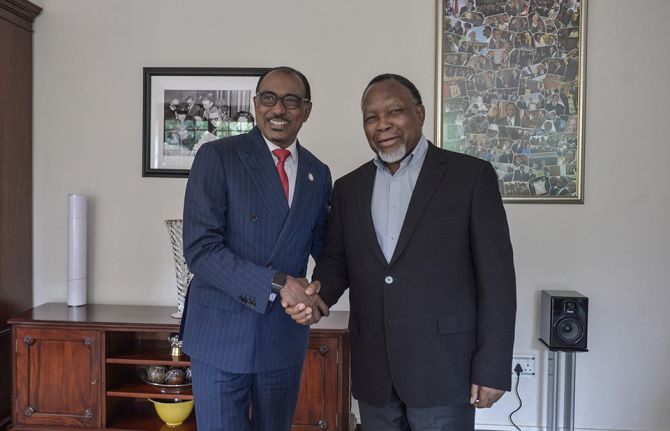 Keeping up the momentum in the global AIDS response
Keeping up the momentum in the global AIDS response

24 April 2019
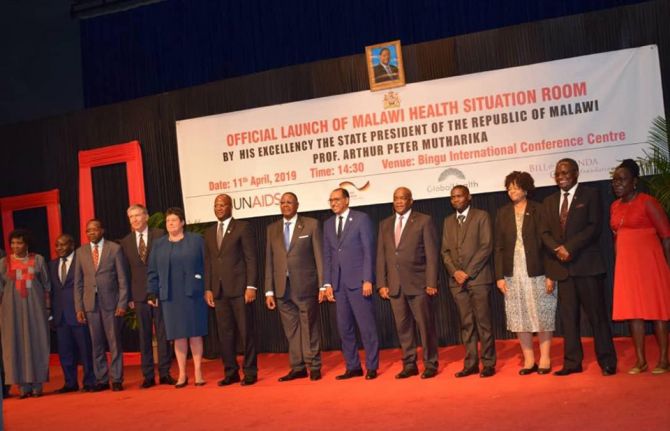 Malawi launches its health situation room
Malawi launches its health situation room

12 April 2019
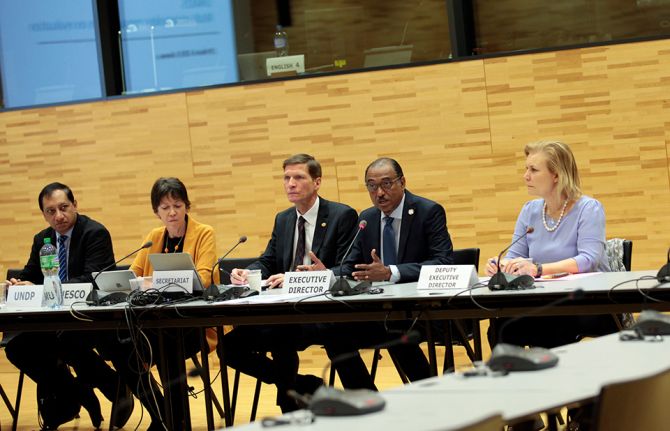 Learning lessons on evaluation
Learning lessons on evaluation

02 April 2019

Feature Story
Yale convenes together senior health practitioners to build leadership and strategic problem-solving to improve health systems
05 June 2011
05 June 2011 05 June 2011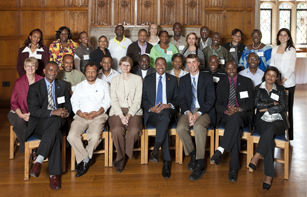
Credit: Carl Kaufman / Yale
The Global Health Leadership Institute (GHLI) of Yale University held its 2011 GHLI Conference from 5-10 June 2011 under the theme of “moving health systems forward”. The Conference convened senior health practitioners from around the world to facilitate collaborative solutions in strengthening health systems.
Speaking on 5 June, UNAIDS Executive Director Michel Sidibé gave an inaugural address to the conference to commemorate 30 years since the start of the AIDS response and shared UNAIDS’ perspective on future directions.
“We are so pleased to have Michel Sidibe join us to open our conference this year and help further bring attention to the role strategic planning and leadership play in helping solve global health issues,” said Elizabeth Bradley, Ph.D., faculty director, Yale Global Health Leadership Institute. “The conference is about gathering health officials from around the world to share experiences, develop leadership and identify creative ways to solve problems that affect the everyday lives of people in these countries,” she added.
Mr Sidibé stressed the transformative role that the AIDS response has played in community mobilization and strengthening health systems. “The AIDS response has led to enormous progress towards scaling up access to treatment and reaching out to people at risk of HIV infection, with a strong human rights focus. This has been, and continues to be, a catalyst for change in the health systems of many affected countries.”
The AIDS response has led to enormous progress towards scaling up access to treatment and reaching out to people at risk of HIV infection, with a strong human rights focus. This has been and continues to be a catalyst for change in the health systems of many affected countries
Michel Sidibé, UNAIDS Executive Director
This year’s week-long event brought together senior health practitioners from Ghana, Liberia, Rwanda, and South Africa to focus on health system issues including mental health, maternal mortality, human resource management and management capacity building. These countries have achieved improvements in health despite limited resources and have gathered to discuss and apply strategic problem solving to national health priorities.
In his speech, Mr Sidibé also recognized the leadership of these four countries and praised their high level representation at the General Assembly High Level Meeting on AIDS.
Each country delegation, comprised of senior leadership from Ministries of Health, non-governmental organizations and academic institutions, brought a health system challenge to address at the conference with the support of Yale faculty and experts. Delegates participated in interactive lectures, cross-country roundtable discussions, keynotes and facilitated work sessions. Delegates met with prominent leaders in global health and received training in strategic problem-solving and leadership.
Global Health Leadership Institute
The Yale Global Health Leadership Institute (GHLI) develops global health leadership through innovative education and research programmes that strengthen the capacity of countries and communities to ensure health equity and quality of care for all.
External links
Related

Press Release
Global AIDS response continues to show results as a record number of people access treatment and rates of new HIV infections fall by nearly 25%
03 June 2011 03 June 2011As the world marks 30 years of AIDS, UNAIDS estimates 34 million [30.9 million–36.9 million] people are living with HIV and nearly 30 million [25 million–33 million] people have died of AIDS-related causes since the first case of AIDS was reported on 5 June 1981

(From left): Michel Sidibé, UNAIDS Executive Director; Christina Rodriguez, Co-Founder, Smart Youth; Asha-Rose Migiro, Deputy Secretary-General at Press conference on AIDS at 30: Progress of nations, held at UN Headquarters, New York City on June 3, 2011.
Credit: UNAIDS/B. Hamilton
NEW YORK/GENEVA, 3 June 2011—About 6.6 million people were receiving antiretroviral therapy in low- and middle-income countries at the end of 2010, a nearly 22-fold increase since 2001, according to a new report AIDS at 30: Nations at the crossroads, released today by the Joint United Nations Programme on HIV/AIDS (UNAIDS).
A record 1.4 million people started lifesaving treatment in 2010—more than any year before. According to the report, at least 420 000 children were receiving antiretroviral therapy at the end of 2010, a more than 50% increase since 2008, when 275 000 children were on treatment.
“Access to treatment will transform the AIDS response in the next decade. We must invest in accelerating access and finding new treatment options,” said Michel Sidibé, UNAIDS Executive Director. “Antiretroviral therapy is a bigger game-changer than ever before—it not only stops people from dying, but also prevents transmission of HIV to women, men and children.”
His statement follows the recent HPTN052 trial results which found that if a person living with HIV adheres to an effective antiretroviral regimen, the risk of transmitting the virus to his or her uninfected sexual partner can be reduced by 96%.
“Countries must use the best of what science can offer to stop new HIV infections and AIDS-related deaths,” said UN Deputy Secretary-General Asha-Rose Migiro. “We are at a turning point in the AIDS response. The goal towards achieving universal access to HIV prevention, treatment, care and support must become a reality by 2015.”
HIV prevention efforts showing results
According to the report, the global rate of new HIV infections declined by nearly 25% between 2001 and 2009. In India, the rate of new HIV infections fell by more than 50% and in South Africa by more than 35%; both countries have the largest number of people living with HIV on their continents.
The report found that in the third decade of the epidemic, people were starting to adopt safer sexual behaviors, reflecting the impact of HIV prevention and awareness efforts. However, there are still important gaps. Young men are more likely to be informed about HIV prevention than young women. Recent Demographic Health Surveys found that an estimated 74% of young men know that condoms are effective in preventing HIV infection, compared to just 49% of young women.
In recent years, there has been significant progress in preventing new HIV infections among children as increasing numbers of pregnant women living with HIV have gained access to antiretroviral prophylaxis during pregnancy, delivery and breastfeeding. The number of children newly infected with HIV in 2009 was 26% lower than in 2001.
About 115 low- and middle-income countries are providing optimal treatment regimens for pregnant women living with HIV as recommended by the World Health Organization (WHO). There are 31 countries that still use sub-optimal regimens in many of their HIV prevention programmes. UNAIDS urges all countries using sub-optimal regimens to revise their treatment guidelines and make the transition to optimal WHO recommended regimens.
AIDS is not over—significant challenges remain
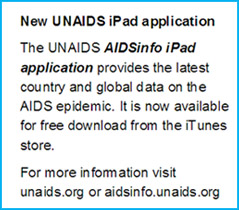
According to the latest estimates from UNAIDS, 34 million [30.9 million–36.9 million] people were living with HIV at the end of 2010 and nearly 30 million [25 million–33 million] have died from AIDS-related causes since AIDS was first reported 30 years ago.
Despite expanded access to antiretroviral therapy, a major treatment gap remains. At the end of 2010, 9 million people who were eligible for treatment did not have access. Treatment access for children is lower than for adults—only 28% of eligible children were receiving antiretroviral therapy in 2009, compared to 36% coverage for people of all ages.
While the rate of new HIV infections has declined globally, the total number of HIV infections remains high, at about 7000 per day. The global reduction in the rate of new HIV infections hides regional variations. According to the report, above-average declines in new HIV infections were recorded in sub-Saharan Africa and in South-East Asia, while Latin America and the Caribbean experienced more modest reductions of less than 25%. There has been an increase in the rate of new HIV infections in Eastern Europe and in the Middle East and North Africa.
In virtually all countries, HIV prevalence among populations at increased risk of HIV infection—men who have sex with men, people who inject drugs, sex workers and their clients, and transgender people—is higher than among other populations. Access to HIV prevention and treatment for populations at higher risk of infection is generally lower due to punitive and discriminatory laws, and stigma and discrimination. As of April 2011, 79 countries, territories and areas criminalize consensual same-sex relations; 116 countries, territories and areas criminalize some aspect of sex work; and 32 countries have laws that allow for the death penalty for drug-related offences.
According to the report, gender inequalities remain a major barrier to effective HIV responses. HIV is the leading cause of death among women of reproductive age, and more than a quarter (26%) of all new global HIV infections are among young women aged 15-24.
AIDS resources declining
According to the report, investments in the HIV response in low- and middle-income countries rose nearly 10-fold between 2001 and 2009, from US$ 1.6 billion to US$ 15.9 billion. However, in 2010, international resources for HIV declined. Many low-income countries remain heavily dependant on external financing. In 56 countries, international donors account for at least 70% of HIV resources.
“I am worried that international investments are falling at a time when the AIDS response is delivering results for people,” said Mr Sidibé. “If we do not invest now, we will have to pay several times more in the future.”
A 2011 investment framework proposed by UNAIDS and partners found that an investment of at least US$ 22 billion is needed by the year 2015, US$ 6 billion more than is available today. When these investments are directed towards a set of priority programmes that are based on a country’s epidemic type, the impact is greatest. It is estimated that the return on such an investment would be 12 million new HIV infections averted and 7.4 million AIDS-related deaths averted by the year 2020. The number of new infections would decline from about 2.6 million in 2009 to about 1 million in 2015.
Perspectives on AIDS from leaders around the world
The report features commentaries from 15 leaders in the global AIDS response, including South Africa’s President Jacob Zuma, former United States President Bill Clinton, former President of Brasil Luiz Inácio Lula da Silva, the President of Mali, Amadou Toumani Touré, and Jean Ping, Chairperson of the African Union Commission. The commentaries cover a range of areas, such as AIDS funding, South-South cooperation, youth leadership, the empowerment of women, key affected populations, injecting drug use, human rights, stigma and discrimination and systems integration.
Young people leading the HIV prevention revolution
AIDS at 30: Nations at the crossroads also includes an article on a recent event held on Robben Island, South Africa, where Archbishop Desmond Tutu, Co-chair of the UNAIDS High Level Commission on HIV Prevention, passed the baton of leadership in the AIDS response to a new generation of young leaders.
According to the report, some of the most important HIV prevention successes have been led by young people. Data indicate that young people in many heavily affected countries are increasingly adopting safer sexual behaviours.
Contact
UNAIDS GenevaSaira Stewart
tel. +41 79 467 2013
stewarts@unaids.org
UNAIDS Geneva
Sophie Barton-Knott
tel. +41 22 791 1697
bartonknotts@unaids.org
Publications
Multimedia
Multimedia
Press centre
Download the printable version (PDF)

Feature Story
Japan hosts follow-up meeting to discuss outcomes of MDGs Summit 2010
03 June 2011
03 June 2011 03 June 2011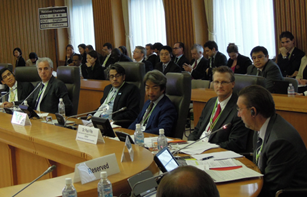
Dr Paul De Lay at the MDGs Follow-up Meeting
Credit: UNAIDS
The Government of Japan, along with the United Nations Development Programme (UNDP), the United Nations Children's Fund (UNICEF), the World Bank and the Japan International Cooperation Agency (JICA), convened a follow-up meeting on 2-3 June 2011 in Tokyo to discuss the outcomes of the UN Millennium Development Goals (MDGs) Summit that took place in September 2010.
With less than five years remaining before 2015, the target year for achieving the MDGs, the meeting brought together high level delegations from more than 100 countries and international organizations, and provided a unique opportunity to exchange knowledge, as well as to discuss more effective measures to strengthen coordination among a broad range of stakeholders.
The meeting was opened by H.E. Prime Minister Kan, who expressed deep appreciation for the solidarity shown by the international community in the wake of the unprecedented earthquakes and tsunami on 11 March 2011. Mr Kan also assured the audience that Japan remains committed to the achievement of MDGs.
Japan remains fully dedicated to carrying out faithfully the international commitments it has expressed in the past to achieving the MDGs
H.E. Mr. Takeaki Matsumoto, Minister of Foreign Affairs of Japan
Mr Takeaki Matsumoto, Japan’s Minister of Foreign Affairs, underlined this commitment saying, “Japan remains fully dedicated to carrying out faithfully the international commitments it has expressed in the past to achieving the MDGs.”
UNAIDS Deputy Executive Director, Programme, Paul De Lay took part in the meeting and also participated in one of the several side events, titled Preparing the health systems for the challenges beyond MDGs.
“UNAIDS has called for taking HIV out of isolation. At the High Level Meeting on AIDS next week, one of the major themes will be “integration”, including exploring synergies between HIV programmes and preventing and caring for non-communicable diseases,” said Dr De Lay.
UNAIDS has called for taking HIV out of isolation. At the High Level Meeting on AIDS next week, one of the major themes will be “integration”, including exploring synergies between HIV programmes and preventing and caring for non-communicable diseases
UNAIDS Deputy Executive Director, Programme, Paul De Lay
The event, moderated by Dr Suwit Wibulpolprasert, Senior Advisor on Disease Control, Ministry of Public Health, Thailand, included presentations from Michel D. Kazatchkine, Executive Director, The Global Fund to Fight AIDS, Tuberculosis and Malaria; Dr Mickey Chopra, Chief, Health Section, Program Division, UNICEF; and Dr Kenji Shibuya, Professor and Chair, Department of Global Health Policy Graduate School of Medicine, The University of Tokyo.
Coming just days before the UN High Level Meeting on AIDS in New York, the meeting enabled participants to exchange their good practices and also learn from others about projects and programmes focused on hard-to-reach regions and groups. Participants also discussed the “way forward” beyond 2015, using lessons learned in the decade under the current MDGs.
During his visit to Japan Dr De Lay also met with Dr Masato Mugitani, Assistant Minister for Global Health, the Ministry of Health, Labour and Welfare and Mr Masaya Fujiwara, Deputy Director-General for Global Issues of the International Cooperation Bureau, the Ministry of Foreign Affairs to discuss Japan’s active participation in the UN High Level Meeting, especially regarding prevention of mother-to-child transmission of HIV. Dr DeLay also met with civil society representatives who will attend the General Assembly event.

Feature Story
Global Business Coalition 10th anniversary conference: Business driving change for a healthier world
03 June 2011
03 June 2011 03 June 2011
The Global Business Coalition (GBC) Annual Conference and Awards Dinner took place from 1-2 June in New York. This year’s event marked the 10thanniversary of the coalition and brought together more than 500 business executives, policy makers, celebrities and thought leaders to discuss on the corporate response to global health challenges and identify new avenues for future business action.
The GBC Annual Conference focuses on the unique role that business plays in addressing health challenges—including HIV, within the workplace and in the world at large. During the conference, the GBC announced an opening of its mandate to address not only infectious pandemic diseases but also the full range of global health challenges upon which the private sector can engage.
One of the panel discussions of the conference focused on the power of men to accelerate progress in eliminating the disparities facing women and girls in the world. Entitled Healthy women, healthy economies: Men who make it their business to improve women's lives. The panel brought together business, political and civil society leaders committed to communicating and demonstrating as men that gender inequity is a source of suffering, not power.
We must engage with men and boys to promote awareness of the need for a ‘new masculinity’ that see women and girls as equal partners
Michel Sidibé, UNAIDS Executive Director
“We must engage with men and boys to promote awareness of the need for a ‘new masculinity’ that see women and girls as equal partners,” said UNAIDS Executive Director Michel Sidibé, a speaker at the event. “We need to share good practices; scale up small-scale projects; promote gender-sensitive education in schools; and push national AIDS programmes to engage with men and boys especially in HIV prevention efforts,” he added.
The panel was moderated by Isobel Coleman from the Council on Foreign Relations’ Women and Foreign Policy Program. Ambassador Eric Goosby, the United States Global AIDS Coordinator also spoke. Speakers from the private sector included Jeff Seabright, Chief Environmental Officer at The Coca-Cola Company; Aigboje Aig-Imoukhuede, Managing Director and CEO of Nigeria's Access Bank; Gary Cohen, Executive Vice President, BD and Rick Echevarria of Intel Corporation.
Artist and AIDS activist Whoopi Goldberg hosted the Awards Dinner on 2 June, where the Global Coalition honoured its two founding supporters George Soros and Ted Turner. The GBC also paid special tribute to U.S. Ambassador Richard Holbrooke who headed the Coalition from 2001 to 2009 and passed away earlier this year.
Addressing the gala, UNAIDS Executive Director Michel Sidibé acknowledged the legacy of Ambassador Holbrooke who he described as a “tireless AIDS advocate”. Mr Sidibé also congratulated the GBC for its enduring commitment to AIDS and the world’s health as well as to saving lives of mothers and babies through and bringing TB into workplace HIV programmes.
External links
External links
Related

Feature Story
Global Partners Forum on children affected by HIV: Time to turn commitments into action
03 June 2011
03 June 2011 03 June 2011A version of this story is also published at www.unicef.org

Charles Aheebwa at home with his two months old sister Kaseo. Mugamba, Uganda.
Credit: UNICEF/Tadej Znidarcic
Global efforts to improve the lives of children affected by HIV are increasing but still fall short of the growing needs of millions. An estimated 16.6 million children have lost one or both parents to AIDS-related illness, the vast majority in sub-Saharan Africa.
This year’s Global Partners Forum on children affected by AIDS brings together 100 high level representatives from governments, civil society, donors, international organizations and academic institutions in an effort to promote evidence-based approaches to improve the lives of children affected by HIV. Under the heading Taking Evidence to Impact, the event, starting 3 June in New York, is jointly hosted by UNICEF, the US President’s Emergency Plan for AIDS Relief (PEPFAR) and UNAIDS.
Keeping mothers and children safe from HIV
Efforts to prevent new HIV infections among children child are critical and can serve as an entry point for care and support for the whole family, particularly through better integration of couples testing and counselling; HIV treatment, care and support; and linkages with HIV testing and treatment within child health services.
“Every mother, father and child should have access to comprehensive health care which includes HIV prevention and treatment,” said Michel Sidibé, Executive Director of UNAIDS who will participate in the forum. “Parents should be given the chance to protect their children from HIV and access life-saving antiretroviral medicine for their own health.”
Enormous challenges
Many children affected by HIV continue to face enormous challenges, including the burden of care for sick relatives, trauma from the loss of parents, economic distress and high health costs. There can also be a heightened risk of early sexual debut and abuse, which can make children—particularly girls—more susceptible to HIV infection.
Every mother, father and child should have access to comprehensive health care which includes HIV prevention and treatment
Michel Sidibé, Executive Director of UNAIDS
“These children have already experienced the tragedy of losing a parent or a loved one to AIDS only to be subjected to stigma, discrimination and exclusion from school and social services,” says Dr Anthony Lake, UNICEF Executive Director, “To help these children reach their full potential, we urgently need to invest in national social protection programmes that fight poverty and stigma, and which address the special needs of HIV-affected families.”
Ambassador Eric Goosby, US Global AIDS Coordinator, agrees that targeted investments are needed to improve the lives of children affected by the epidemic. “The U.S. Government is the largest supporter of programs targeting orphans and vulnerable children, and we remain firm in our commitment. Moving forward, we have a shared responsibility to make smart investments that will ultimately ensure a positive future for children affected by HIV/AIDS.”
The two-day forum will review:
- Lessons learned at country level to support children affected by HIV and their families;
- Mechanisms that protect such children from marginalization and discrimination, and increase their access to key social services;
- The importance of child sensitive social protection and strengthening social welfare systems for increasing access to HIV prevention, treatment and care services;
- Increasing the impact of investments and achieve better results for those in greatest need.
The recommendations from the Global Partners Forum will be reflected in discussions during the UN High Level Meeting on AIDS in New York from 8-10 June 2011.
Global Partners Forum
The Global Partners Forum was first established in 2003 to give momentum to fulfilling global commitments for children affected by AIDS laid out in the United Nations General Assembly 2001 Declaration of Commitments on HIV/AIDS and the Millennium Development Goals.



